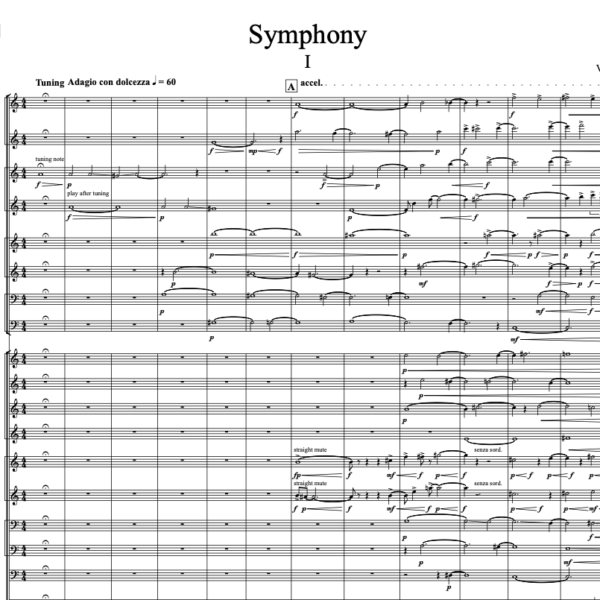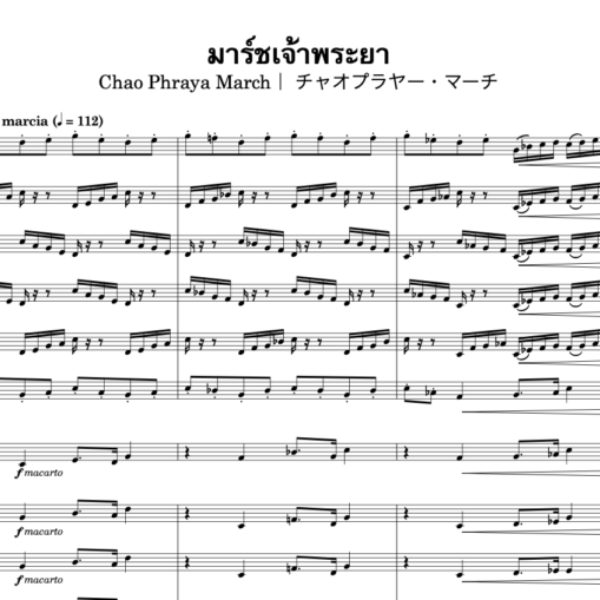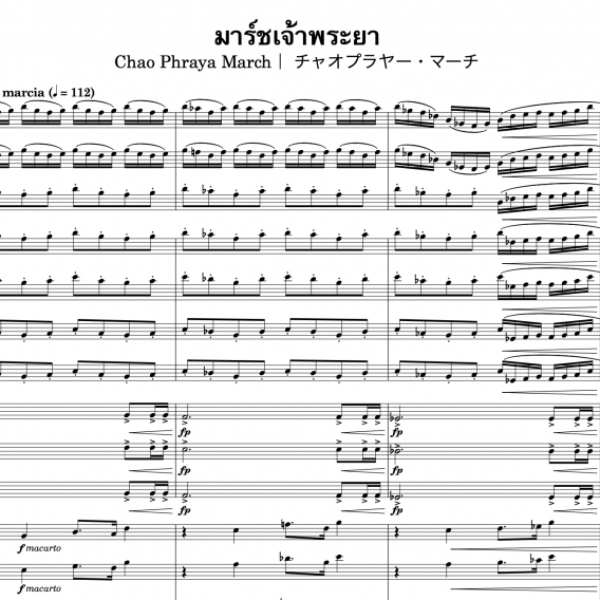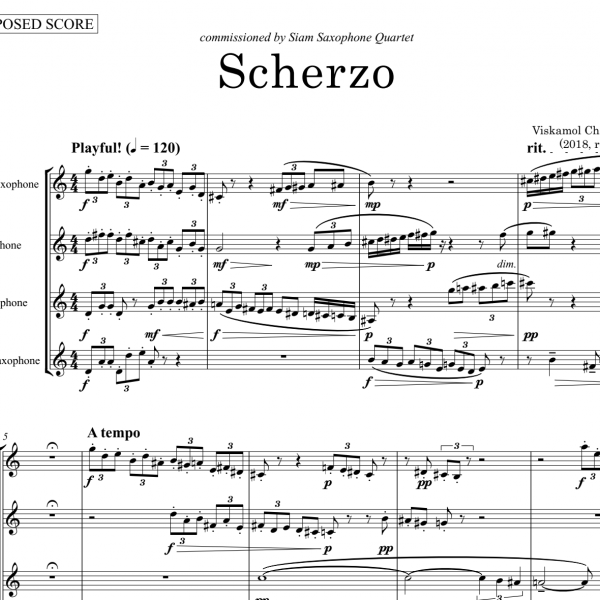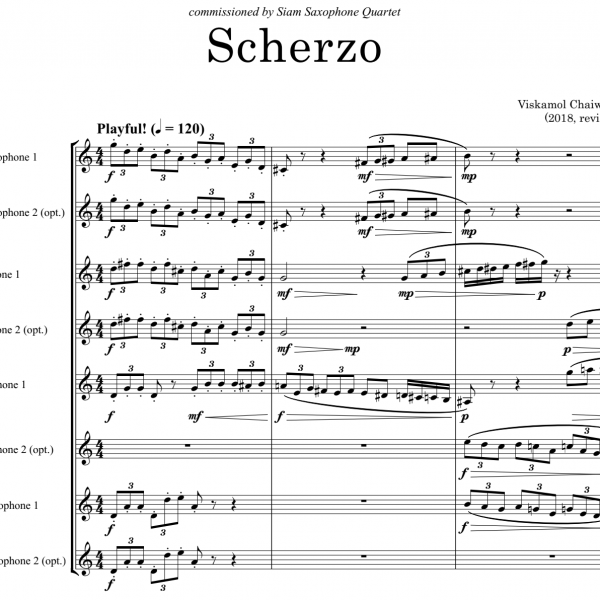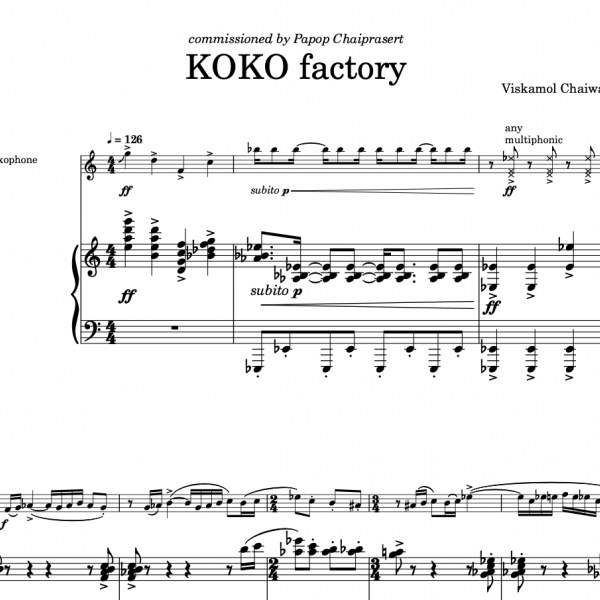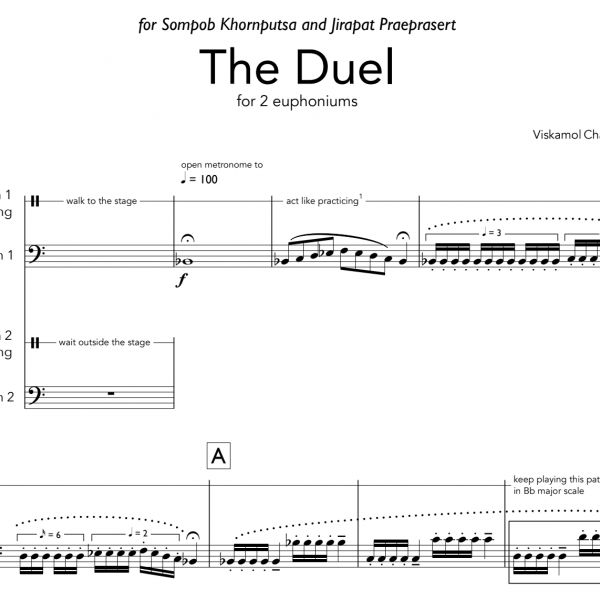Four Pieces from Scarlatti (スカルラッティの四つの小品)
Wind Ensemble | Grade 5+ | 12′ | 2018, 2023
Score + Part (Digital PDF)
5,000฿
Performance by Million Wind Philharmonic
(Separate movements purchase (2,000฿/movement) and key changing available upon request, please contact in for more information)
(มีจำหน่ายแยกท่อนละ 2,000 บาท และ สามารถเปลี่ยนคีย์ให้เหมาะสมกับวงดุริยางค์ได้)
During the seventeenth-century, Domenico Scarlatti, an Italian composer, composed numerous keyboard sonatas — more than 550. His keyboard sonatas are single movements, mostly in binary form and some in early sonata form, mostly written for the harpsichord or the earliest pianofortes. In this arrangement, four of his sonatas in which are stylistically unique are chosen for the orchestration into wind ensemble.
Movement 1 (K.159) – This movement, marked Allegro in the original sonata, started with the lively theme which in this arrangement orchestrated by using the pair of clarinets and horns. Later on the theme was expanded throughout the woodwinds section, alternate to the brass section and conclude with the whole ensemble, then the whole exposition was repeated again with the whole force of the ensemble. In the development section, music transforms the mood and the keys which opens up the opportunity for the exploration of the different instruments’ timbres.
Movement 2 (K.87) – In the original composition tempo markings are not indicated, however considering the music, the orchestrator interpreted it to be paced as Andante or Adagio. The movement features a slow and mournful theme which is orchestrated using the whole wind ensemble force with the exception of percussion instruments to depict the sound of a baroque organ.
Movement 3 (K.430) – Marked with Non presto ma a tempo di ballo (Not hurriedly, but in dance tempo), the sonata starts with a dance-like theme, which was orchestrated by using instrument of harmoniemusik (clarinets, oboes, bassoons and horns) and expanding into a whole ensemble. In this movement, each instrument is featured with their own soloistic moment, either by performing the main theme or the countermelody.
Movement 4 (K.141) – This piece is one of Scarlatti’s most well-known and one of his most unusual sonata. Virtuosic keyboard skills are required to execute this sonata with high precision and musicality. Sonority of plucked string instruments, like guitar or mandolin, are imitated in this sonata with chord strumming and repetitive notes.
In this movement, the whole wind ensemble is challenged with the orchestration of this virtuosic sonata. The rapid repeating notes and running figuration are transmogrified from one group of instruments into another, for example, the ambiguous atmosphere stated by muted trumpet with the accompaniment of flutes and clarinet in the middle of the piece. Toward the end, the whole ensemble’s force is combined which leads directly into the climactic conclusion with strong and vigorous energy.
Program note written by Viskamol Chaiwanichsiri
